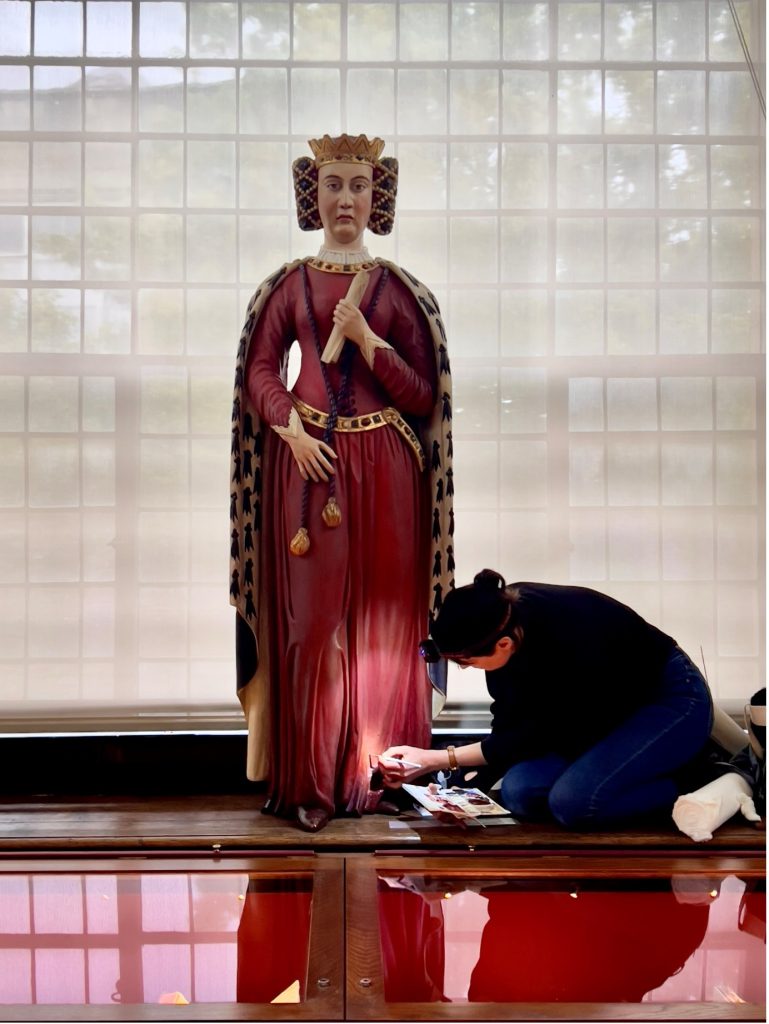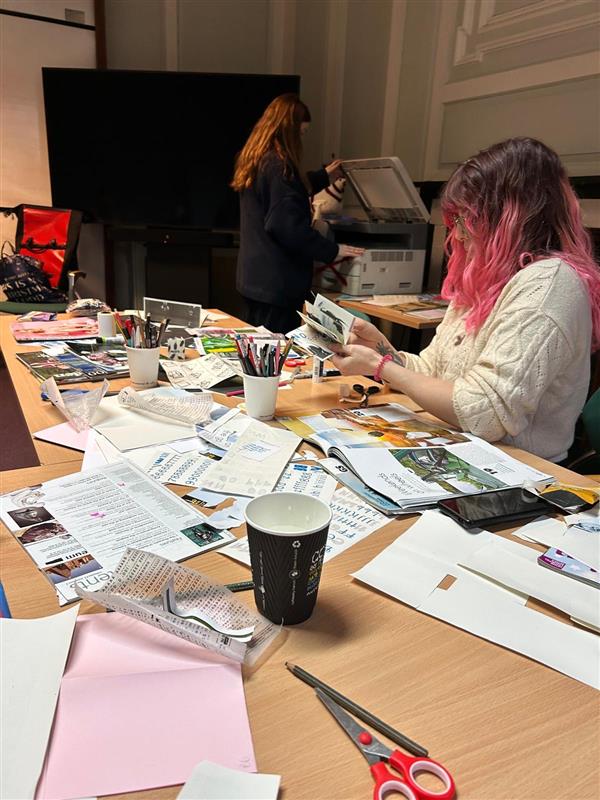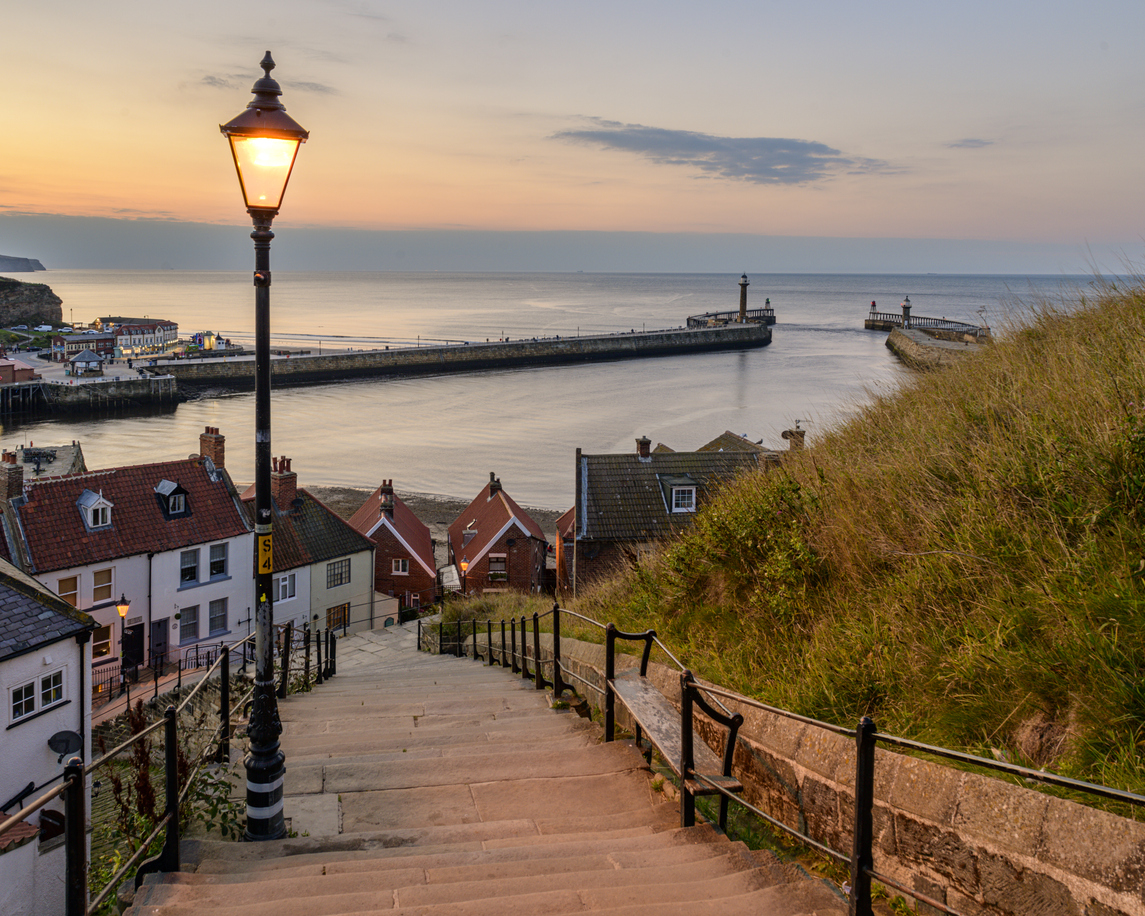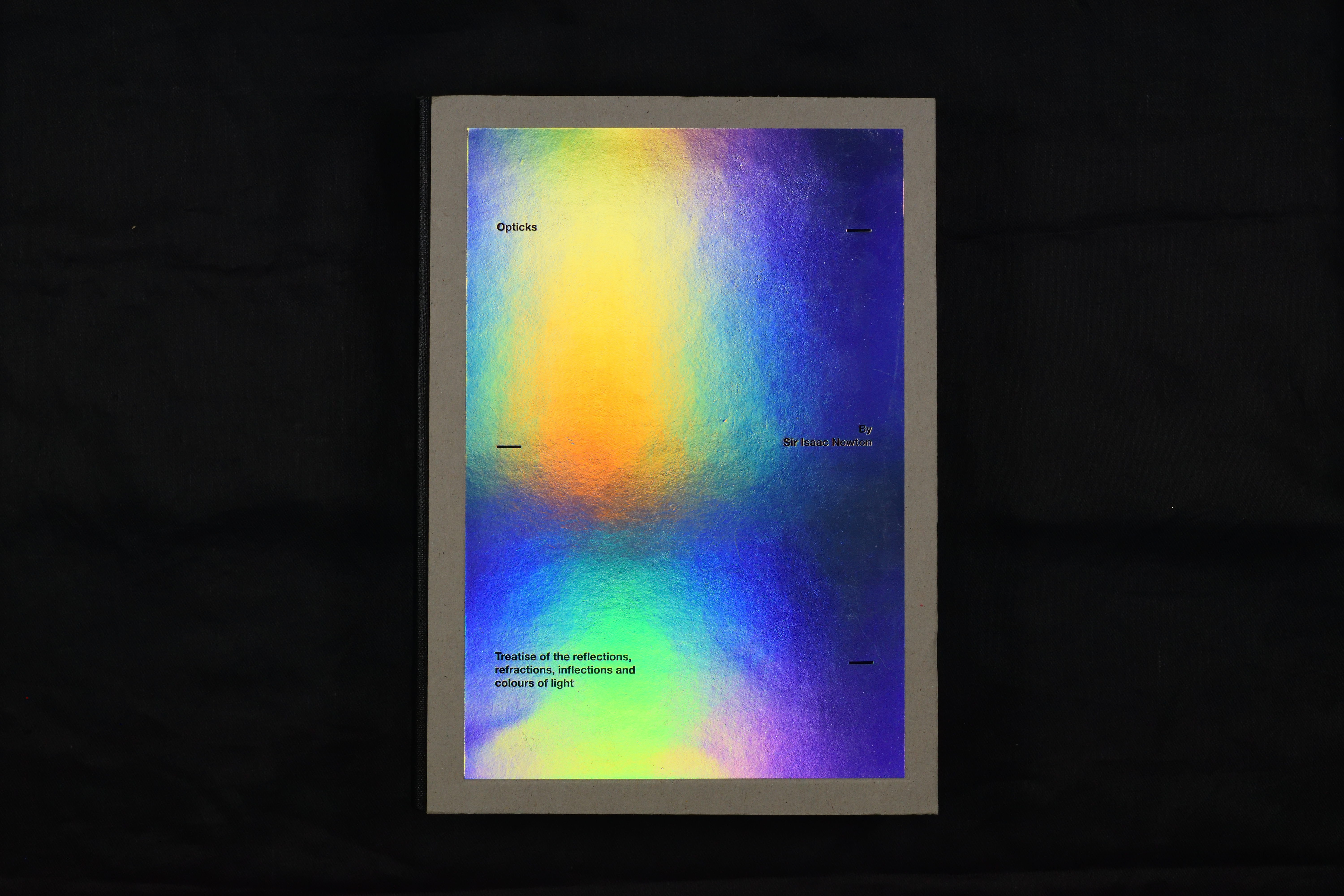Dr Matthew Shaw, Librarian
The Upper Library is such a remarkably baroque space that it is difficult, aesthetically, to stand out. But the College’s statue of Queen Philippa (1305/10-1369), which for many years has stood in the northern window, manages it with aplomb.
It’s a suitably prominent position. In 1341, the College was founded in her honour by her chaplain, Robert d’Eglesfield (c.1295-1349), and Philippa soon provided the new institution with a number of endowments to secure its future. As consort to Edward III (1312-1377), she is remembered as a wise stateswoman, noted – with probably some basis in fact – with petitioning Edward for clemency for the burghers of Calais following it siege in 1347.
The painted wooden effigy, which is roughly life-size, is thought to date from the seventeenth century (the first mention is in the Long Roll for 1658-9, when it was reaffixed to the wall in the College’s original Hall), and is based on Philippa’s tomb in the chapel of the kings in Westminster Abbey. In 1745, Provost Joseph Smith moved the effigy to a niche in his lodgings. In 1778, following a fire, she was removed to a builder’s yard on the site of what is now the Oxford Martin School before somehow making her way to a garden in Godstow. In 1891, she was rediscovered by Henry Willett, who had her restored and returned to the College, where she long has had her home on the great north window of the Upper Library.
Being on display attracts dirt and grime over time, and as part of a conservation project cleaning the shelving and books in the Upper Library this summer, it was time for Queen Philippa to be returned to her former splendour, as well as be given conservation treatment to ensure she can stand proud for another 400 years.
Following initial advice from the Oxford Conservation Consortium, the Library arranged for a conservation assessment and work by the conservator Bianca Madden, who specialises in wall paintings, sculpture, and polychrome or gilded surfaces. Taking on the role of art movers, the College’s estates team carefully wrapped the statue in conservation-grade Tyvek and placed her in a specially-constructed wooden crate, before carefully driving her to Bianca’s studio.
Here, paint analysis showed that the statue was originally brushed with a base layer of lead white with a few particles of red lead. Her red robe was painted with a layer of pure vermillion, and the cloak was painted in a cream colour using a mix of lead white and a small amount of ochre. The samples retain a layer of dirt, suggesting that this decorative scheme was in place for quite some time. At some point, this was painted over with a pale grey (a mix of lead white and charcoal black), and later still painted in pure lead white with a glaze in oil with some carbon black. Provost J. R. Magrath records the statue as being painted blue when it was at Godstow, so perhaps this is the layer of pale grey, and then a layer of Willett’s restoration. Paint analysis did not provide a definite date for the Philippa, but nothing was found to be inconsistent with a seventeenth-century paint scheme.
After this analysis, the conservation work removed the layers of surface and ingrained dirt (including bird lime), revealing the effigy’s shadows and highlights, which had been reversed by dirt. The paint layer was stabilised, and old woodworm holes were repaired, along with cracks in some of the woodwork, using lime-based fine surface filler and conservation acrylic resin.
Following this painstaking work (which was thoroughly documented), the much cleaner Philippa was again wrapped in Tyvek and bubble wrap, secured inside her special crate, and then carefully returned to pride of place in the Upper Library for a final touch up. See how she looks next time you visit the Upper Library.



